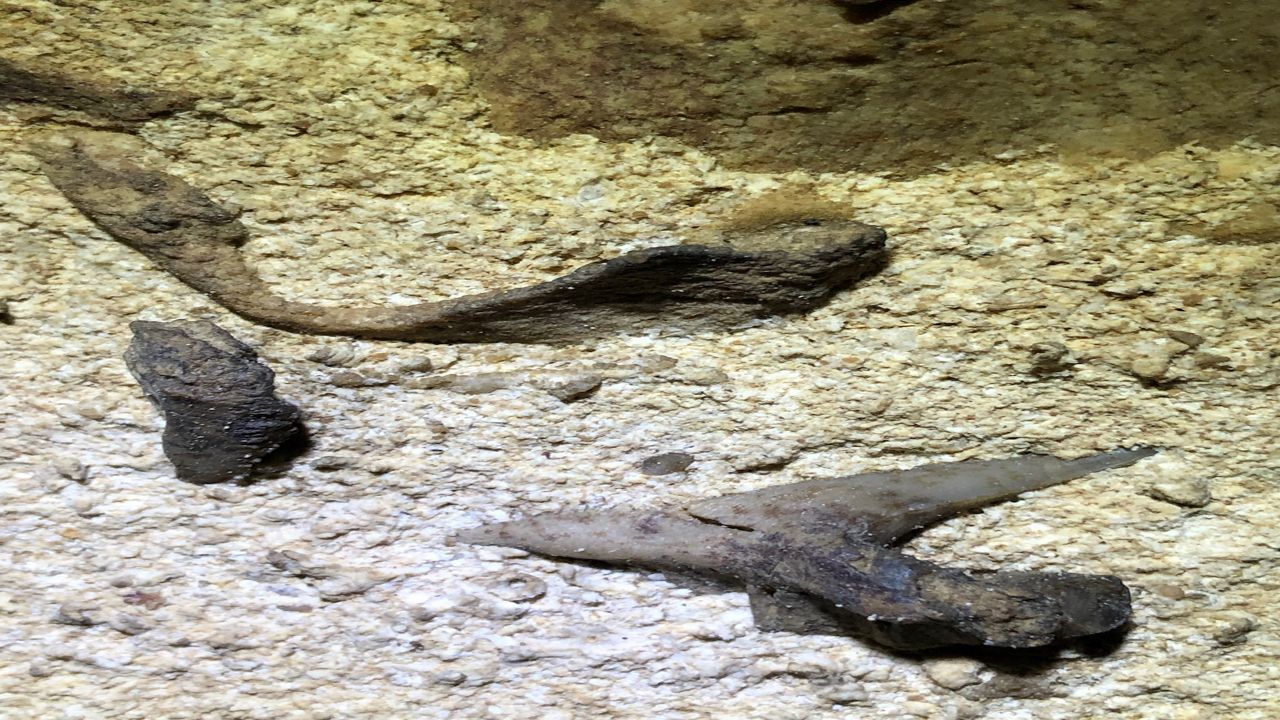BOWLING GREEN, Ky. — Mammoth Cave is known as the longest cave system in the world, but recently it is getting recognized for housing one of the oldest fossils.
Millions of years ago, Kentucky was submerged underwater, with creatures like clams, crinoids, and sharks. Cave specialist, Rick Toomey, explains that shark teeth have been found in various places around the cave, but recently a new shark tooth has been discovered.
This tooth was attached to jaw cartilage, giving further insight into the type of life that lived in Kentucky millions of years ago. Unlike other sharks who have pointy teeth with knife-like edges, this shark had flat teeth indicating it ate things like clams and crinoids.
Although Earth has changed dramatically over the years, Toomey says, “water can percolate through, deposit minerals that will preserve the fossil sharks tooth.”
While the prehistoric shark’s behavior can be compared to a modern-day manta ray, it was approximately the size of a great white shark. The shark fossil not only provides information on the size and behavior of the prehistoric animal but at 330 million years old, it is the oldest fossil in the world. Cave specialists and paleontologists have worked together to give a rough estimate of the age of the fossil.
“In Germany, there’s a bed of these rocks that have the same age that have a volcanic layer over them and we can use the minerals in the volcanic layer to get a radiometric date and find out that these rocks are about 330 million years old,” says Toomey.
Predating the oldest known dinosaur fossils, Toomey says this can change and redefine what we know about prehistoric life.
There are no current tours at Mammoth Cave to see the fossils, but they are expected to be on display at a national museum sometime soon.



